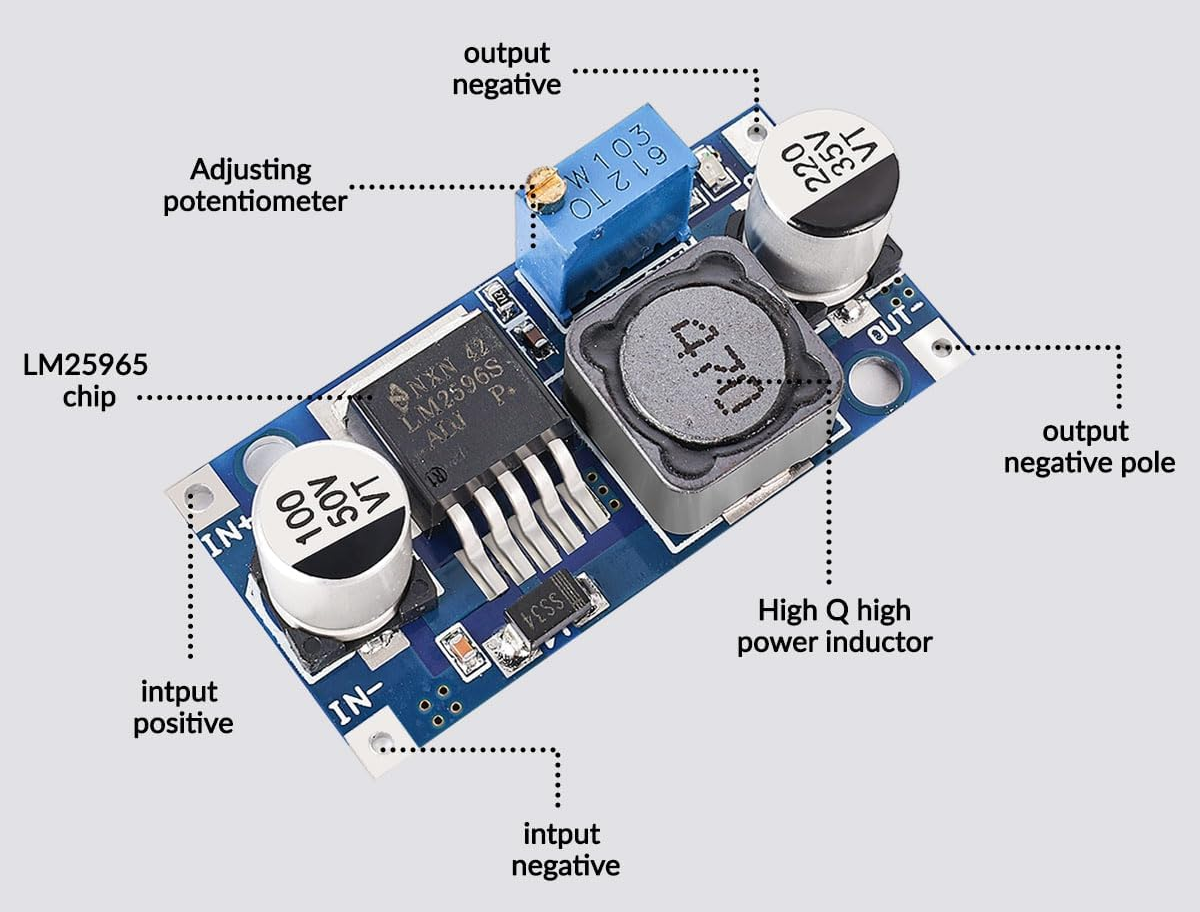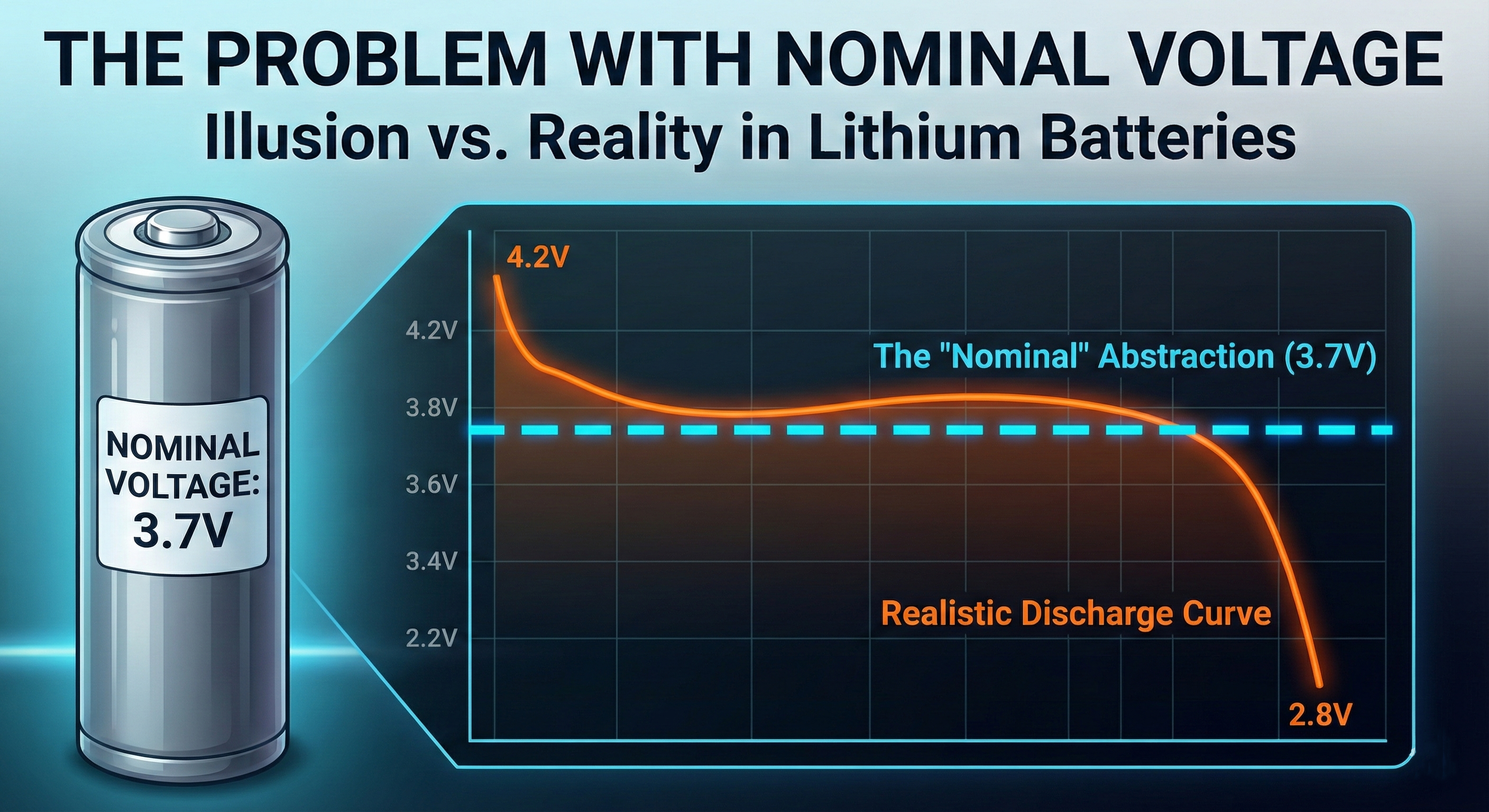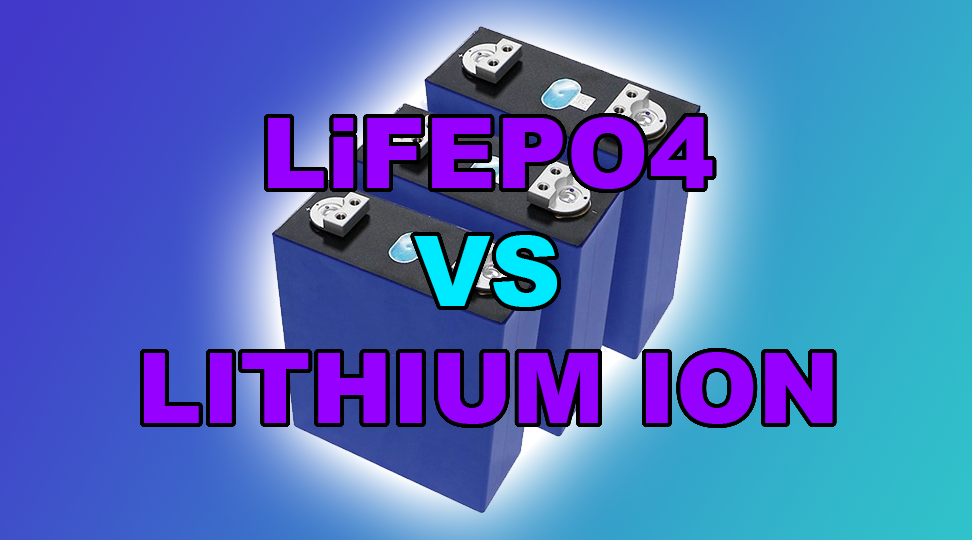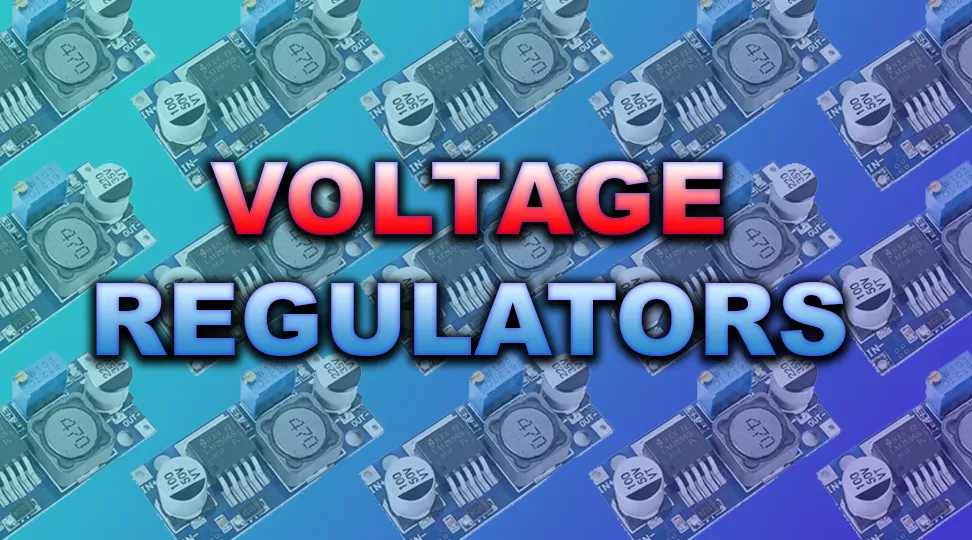
What Is A Voltage Regulator?
Table of Contents
A voltage regulator is a device that stabilizes a system’s voltage under varying load conditions. For example, the DC output from an alternator can fluctuate between 13 V and 15 V, but to charge a car battery you need a steady voltage. The regulator—either built into the alternator or installed separately—ensures that the battery sees a constant charging voltage.
Similarly, when converting AC to DC, you typically use a transformer to step the AC voltage down, then a bridge rectifier to produce DC. That raw DC is often very “choppy,” and while capacitors help smooth it out, sensitive electronics generally require a more precise regulation stage.
Voltage regulators are also used not merely to clean up a noisy supply but to convert one voltage level to another. The most common use is stepping down a higher voltage to a lower one suitable for loads.
Linear vs. Switch-Mode Regulators

Voltage regulators fall into two main categories: linear regulators and switch-mode converters (buck for step-down, boost for step-up). Linear regulators work by dissipating the excess voltage as heat. If the voltage drop is large and the current significant, the regulator can overheat—even with hefty heat sinks and fans—because the package itself can’t shed enough power.
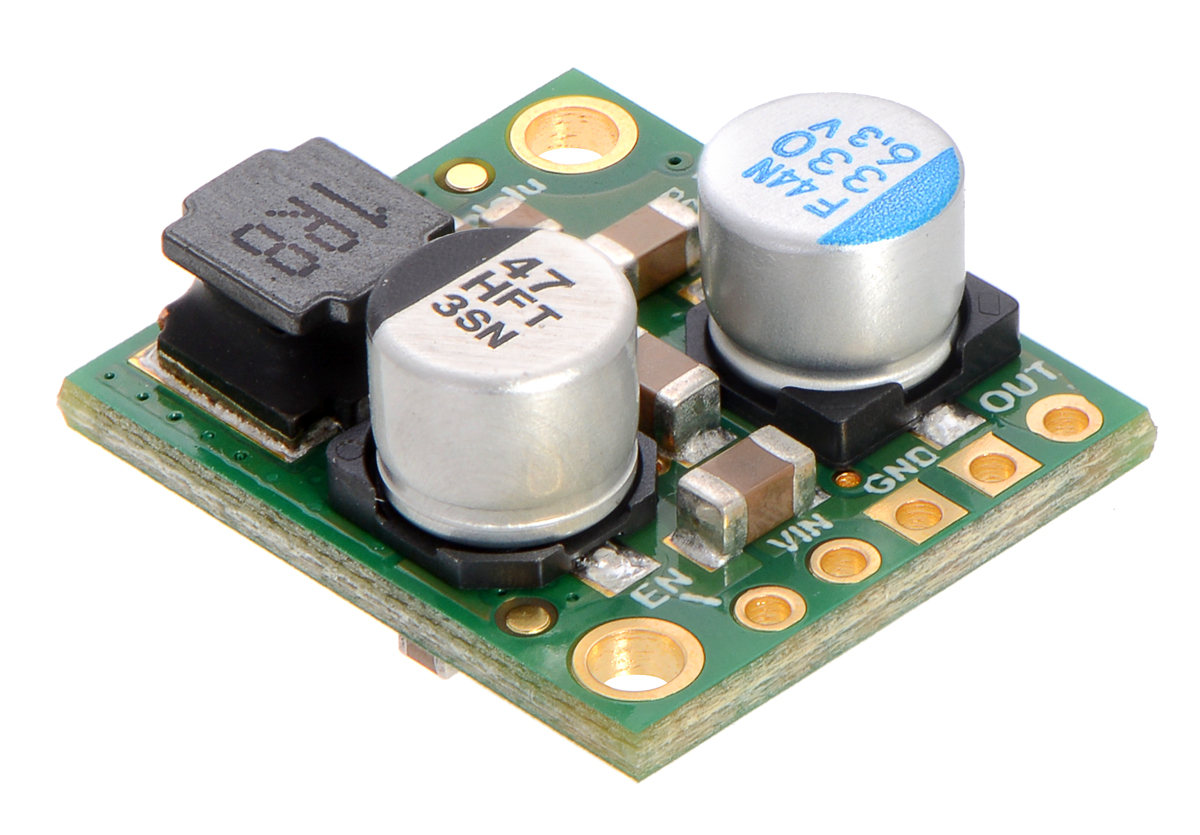
By contrast, switch-mode regulators rapidly switch their pass element on and off, controlling the duty cycle to maintain a steady output. This approach can reach efficiencies of up to 95 %, allowing both step-down and step-up operation with minimal heat generation. For example, a switch-mode converter can take a 24 V supply and efficiently produce 12 V at several amps, provided the module supports the required current.
LM2596 DC-to-DC Buck Converter Modules
One of the most ubiquitous low-cost switch-mode regulators is based on the LM2596 chip. These DC-to-DC buck modules are often sold in multi-packs—for instance, seven modules for around $13 with free shipping. Each typically supports up to 35 V input and advertises a 1.25 V–30 V adjustable output at 3 A.
In practice, however, you won’t reliably draw 3 A continuously without additional cooling. At currents above 1.5 A they tend to get quite hot, and you’d need a good copper heat sink, thermal compound, and possibly a fan. With minimal heatsinking you can expect about 1–1.5 A continuous, or brief peaks of 3–4 A for a second or two. These modules work well to power small loads—such as LED strips—where about 10 W of output (at 12 V × 0.8 A) is sufficient.
LM2596S Modules with Display
A variation on the classic LM2596 module adds an integrated digital display so you can monitor the output voltage in real time. While a pack of two such boards cost around $8, the larger PCB area helps dissipate heat more effectively, giving roughly 10–20 % higher current capacity without extra cooling. Pick up your Voltage Regulator with Display today on Amazon.
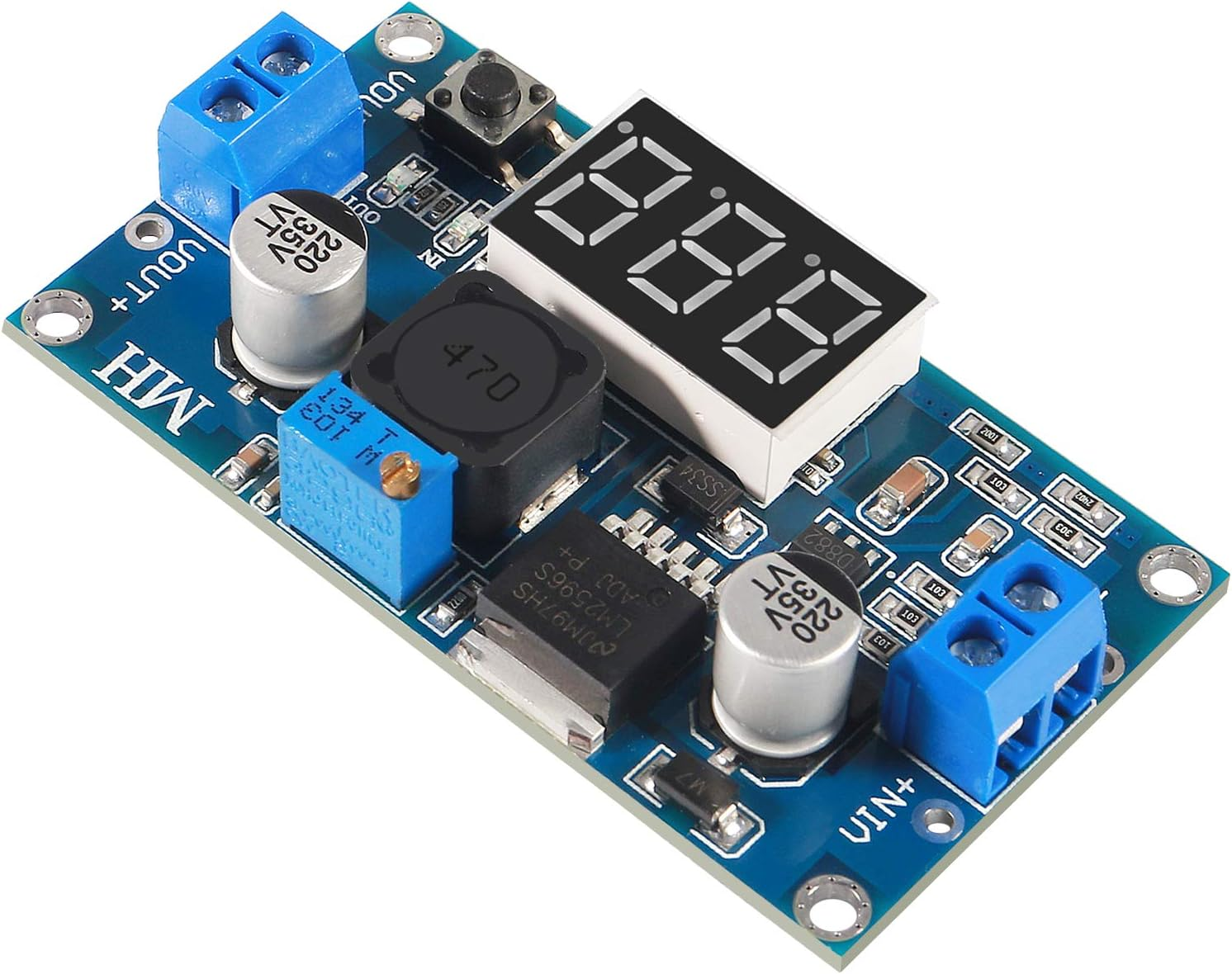
20 A / 300 W Constant-Current Buck Converter
Although marketed as a constant-current module, setting the current knob fully clockwise converts it into a robust constant-voltage regulator. These boards include heat sinks on the power stages and handle 6 V–40 V inputs. You can draw 10 A continuously (with a fan), and up to 16–17 A near their limits. True 20 A output requires replacing the thermal film with quality paste, larger heat sinks, and active cooling.

With proper cooling, you can power several hundred watts of DC equipment: from 12 V inverters to laptop DC-barrel devices. For instance, you could buck a 4 S Li-ion battery down to 13–14 V to drive a small pure-sine inverter, or drop 24 V to around 19.5 V to run a laptop directly, bypassing its internal AC-DC stage. You can get this awesome constant current buck converter on Amazon.
USB Charge Modules 5 V Regulators
These small red USB charge boards may look like simple phone chargers, but electrically they’re just 5 V switch-mode regulators. These typically support up to 3 A output (practically 2.4–2.8 A with a good cable) from inputs up to 24 V. They don’t implement USB PD or Quick Charge protocols, but they’re ideal for powering ESP32s, Arduinos, fans, or even charging phones at the baseline 15 W USB-PD rate.
You can buy five of these modules for under $10, making them cost-effective to stock for any project requiring a basic 5 V supply. Their simplicity and low price mean you can solder one in wherever you need a USB power port. Pickup your 5 pack of USB charge modules on Amazon today!
Conclusion
Voltage regulators come in all shapes and sizes: the LM2596 DC-DC buck modules offer adjustable 1.25 V–30 V outputs at around 1–1.5 A for small loads; the LM2596S variants with digital displays add real-time voltage readout and larger PCBs for 10–20 % more continuous current without extra cooling; the beefy 20 A/300 W constant-current buck converter doubles as a high-power constant-voltage supply—10 A continuous (up to 16–17 A peaks) with proper heatsinking; and the compact 5 V USB charge modules deliver a baseline 15 W (≈2.5 A) from inputs up to 24 V, making them perfect—and practically disposable—for any USB-powered project.
We hope this article helped you learn everything you needed to know about voltage regulators, thanks for reading!
